Rabat – Morocco’s Modern Capital
This is my third post on the recently completed Adventures Abroad Quintessential Morocco tour. In the first I gave an overview of the tour and Morocco as a desirable destination. In the second I featured the country’s largest city Casablanca with its amazing Hassan II mosque. In this post I’ll feature the capital city of Rabat which is the primary residence of the king, seat of government and home to two of the most unusual modern buildings in all of Africa. We’ll also visit the mausoleum of the Moroccan royal family and the Kasbah of the Oudayas overlooking the mouth of the Bou Regreg river. Altogether these both modern and ancient structures combine as the Rabat UNESCO World Heritage Site, the first of many to come on this tour. It promises to be a very interesting if short stay and I hope you’ll join us.
History of Rabat
Rabat has a long, but very disjointed history with several communities located at the strategic point where the Bou Regreg river empties into the Atlantic Ocean. As usual the Phoenicians were the first settlers from outside the area which was populated by various Berber peoples before recorded history. The Phoenicians were succeeded by the Romans who built the nearby city of Sala Colonia which lasted until the 5th century before gradually falling into disrepair and abandonment. By the time of the Arab conquest in the 7th century there was virtually nothing left of the Roman port city.
The name Rabat first appears in the 10th century when the Umayyads of Andalusia built a ribat or fortified settlement on or near the site of the current kasbah. By 1150 the Almohads were in firm control of area and commenced a major building project that included city walls and a grand mosque that never actually got finished. We’ll see the remains of it later today. While the city of Salé on the opposite side of the river prospered, Rabat never quite got off the ground and once again was pretty well abandoned by the 15th century.
Thanks to Phillip III of Spain the area sprang to life once again when all of the remaining Moriscos, people of Arab descent, were expelled in 1609. Many of them came to the area and began the infamous Republic of Bouregreg aka the Corsair Republic which was an unabashedly pirate haven.
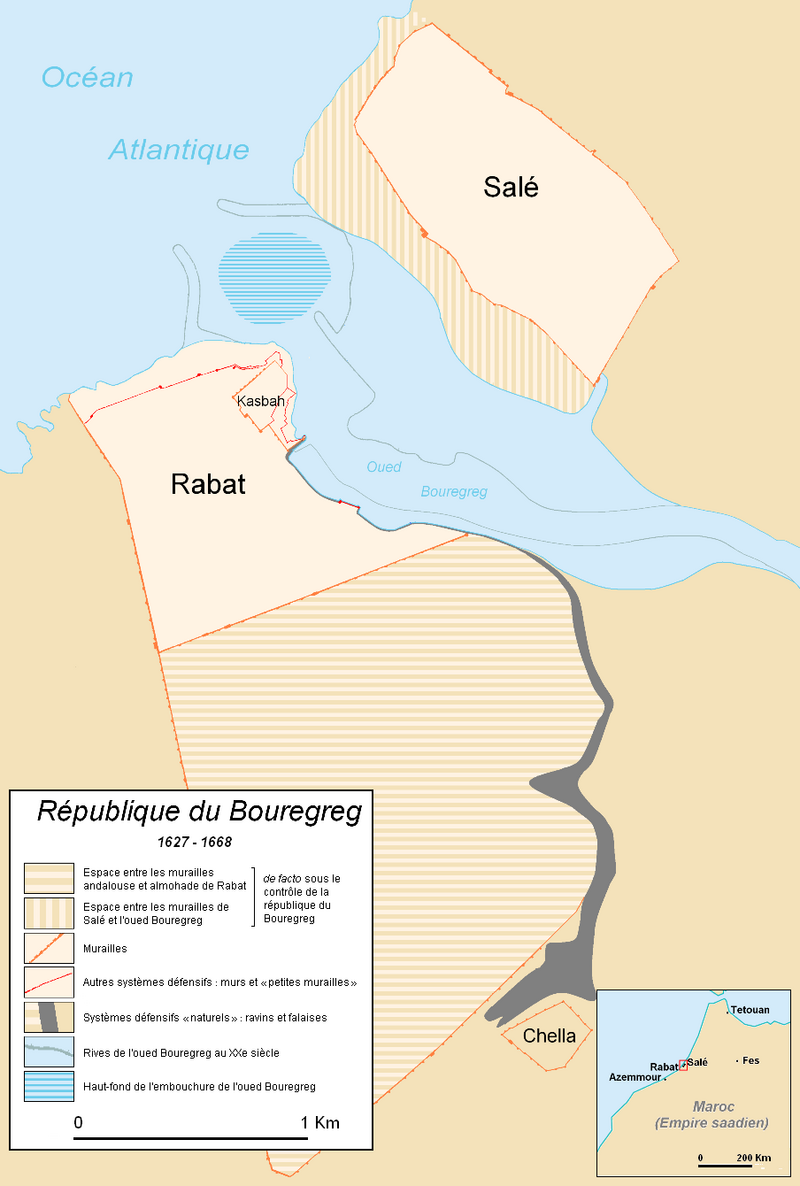
Even after the current Alawi dynasty solidified its control over most of Morocco including the Rabat/Salé area in 1666, they permitted the corsairs to operate unopposed right up until the 19th century when pressure from European countries and the United States forced them to end the piracy once and for all.
Although Fes, Marrakech and Meknes were all capitals at one time or another from the 7th century right up until the 20th, there doesn’t seem to have been any compulsion on the part of the various rulers to give Rabat that higher status. However, Mohammed III did build a royal palace, the Dar al-Makhzen in Rabat in the 18th century that today is the official royal residence. We will get a look at it from the outside later today.
When the French arrived in 1912 everything changed for Rabat. They moved the capital from Fes to Rabat and began a major modernization of the city that created its wide boulevards, extensive gardens and overall appearance that is quite unlike any other city in Morocco. After independence in 1956, King Mohammed V apparently liked what the French had bequeathed and kept Rabat as the capital city and principle residence of the monarchy.
So with that brief introduction let’s explore this pirate haven turned administrative centre.
It’s just over an hour from leaving behind Casablanca’s seemingly endless outskirts to the suburbs of Rabat. The first thing I notice is how green the city is compared to Casablanca; there is an actual green belt you pass through. The streets are wide and straight with not that much traffic.
Our first stop is inside the grounds of the Royal Palace where we are the only tour bus in the small parking lot. I don’t know if our local guide has some special clout or not, but we are permitted to pass through the heavily guarded gates to the palace complex.
After disembarking our guide leads us across an almost deserted plaza in front of the Ahl Fas mosque which is where the king gives the Friday sermon, a tradition that goes back hundreds of years.

This is the entrance to the Royal Palace and this is as close as we are allowed to get, but in the absence of any other tourists it still feels like a privilege to get this close.
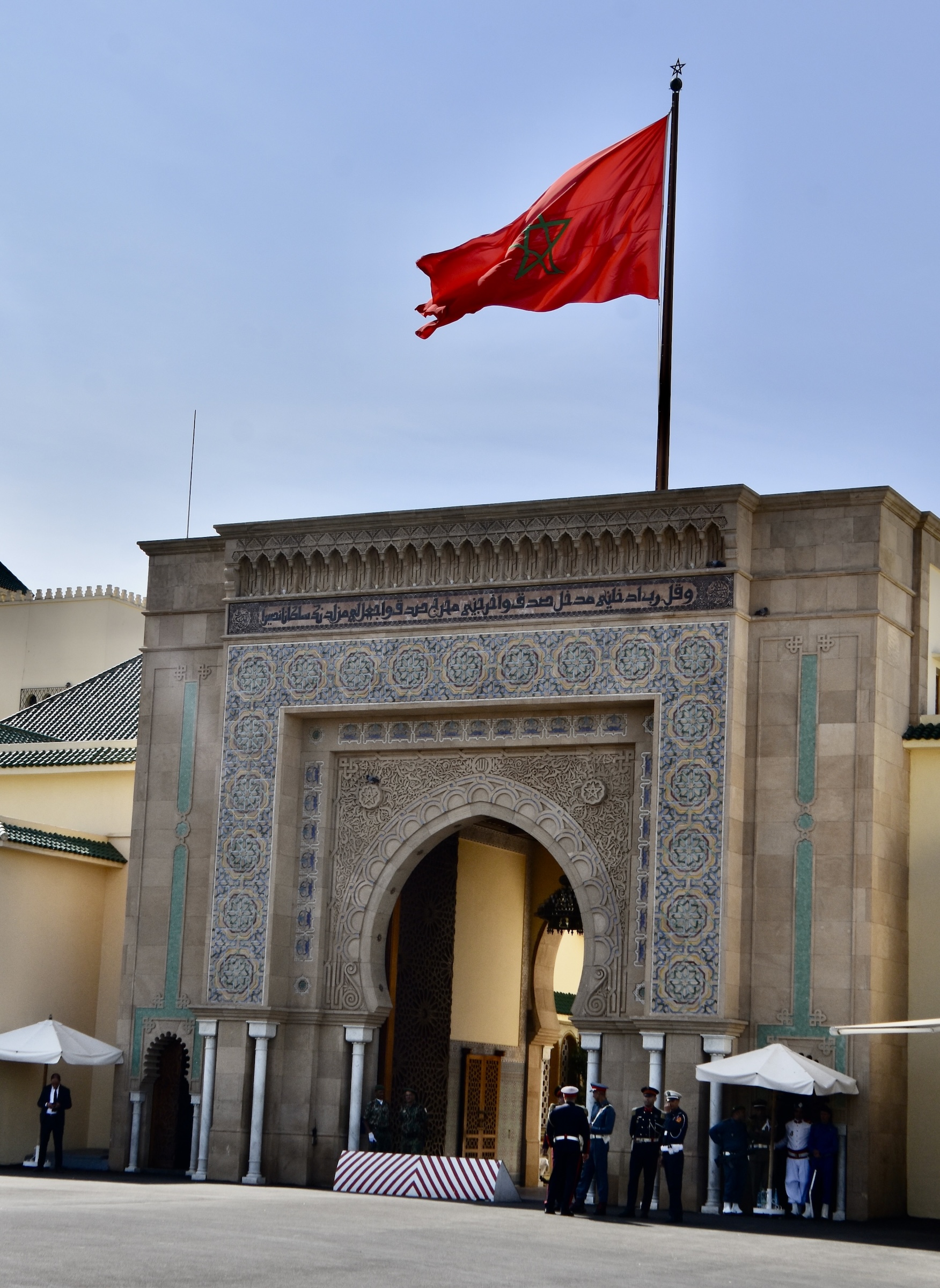
One thing I did not photograph and should have, were the huge number of storks within the confines of the Royal Palace. They are year round residents of Rabat and are considered good luck symbols.
Mausoleum of Mohammed V & Hassan Tower
Mausoleums are a big deal in the Islamic world and over the years Alison and I have visited quite a few including Ataturk’s in Ankara, the Agha Khan’s on an island in the Nile and Suleyman the Magnificent in Istanbul, not to mention the remains of the Mausoleum of Halicarnassus in modern day Bodrum, once one of the Seven Wonders of the Ancient World. The mausoleum of Mohammed V was commissioned by his son Hassan II in 1961 and took ten years to complete. Mohammed V was interred here in 1971 along with his son Prince Abdullah in 1983 and lastly Hassan II in 1999.
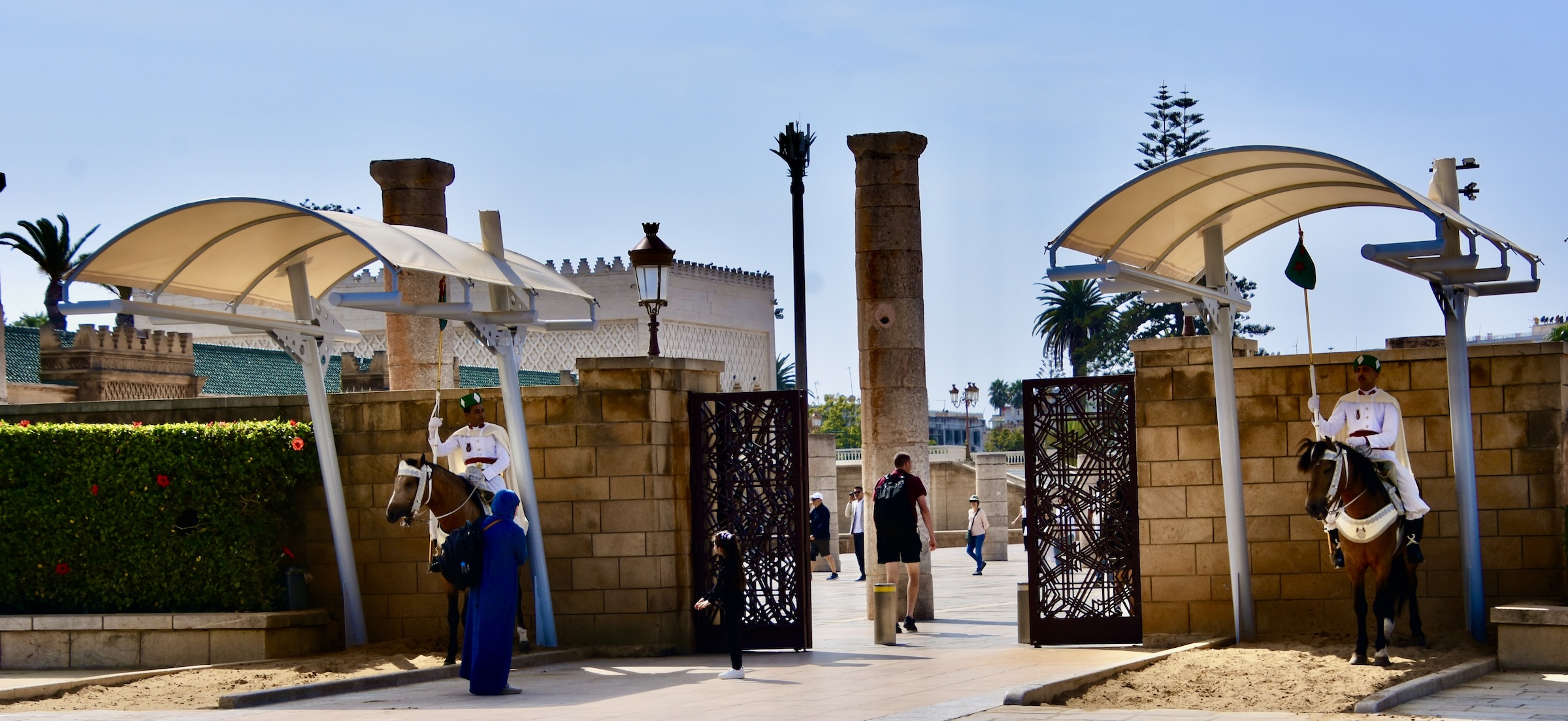
This is the entrance to the mausoleum complex as well as Hassan Tower and the unfinished mosque. The horsemen stand perfectly still for two hour shifts.
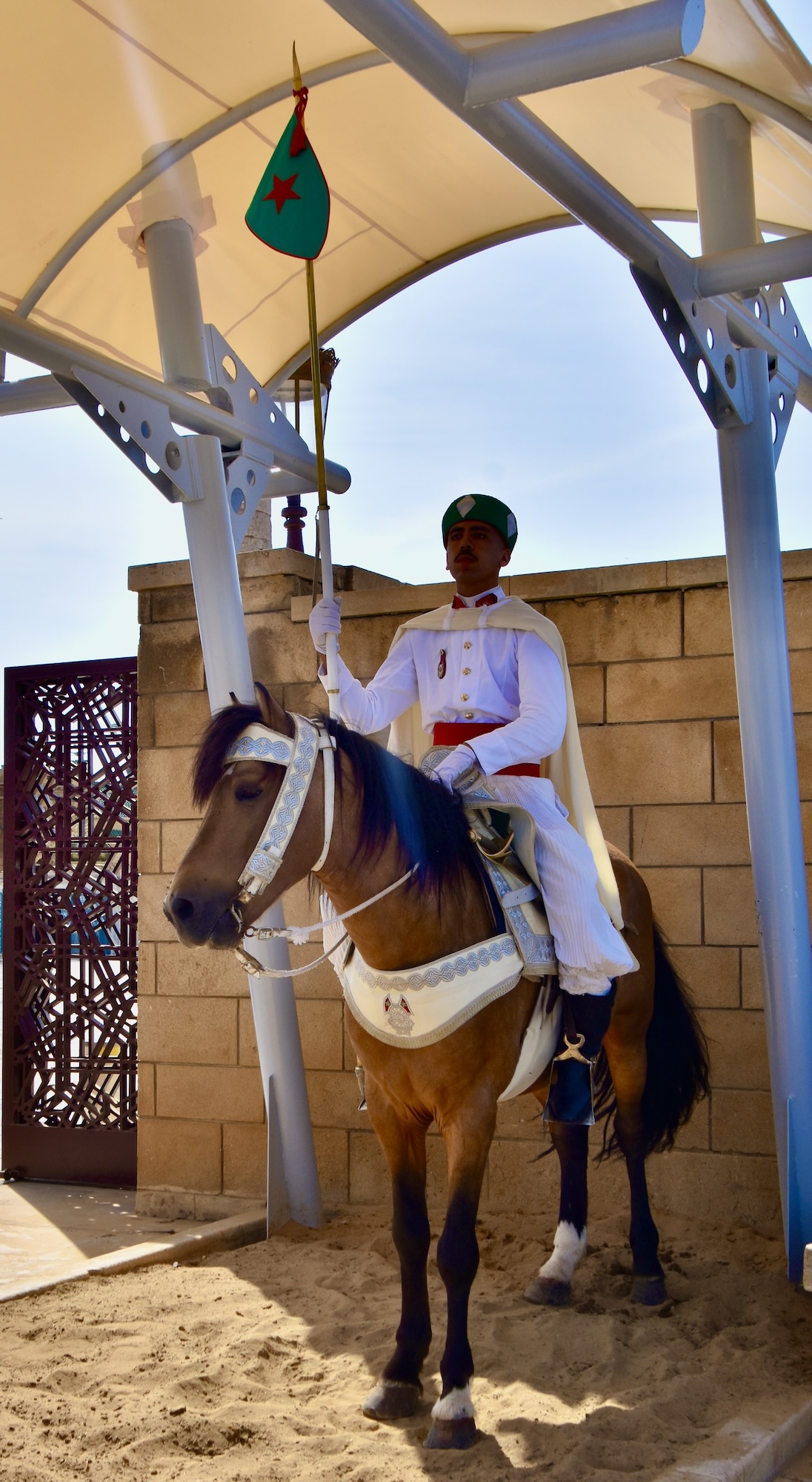
As mausoleums go Mohammed V’s is quite modest with a very tasteful rectilinear design, by a Vietnamese architect of all things. We arrive just as the colourful and very large custodians are changing the guard.
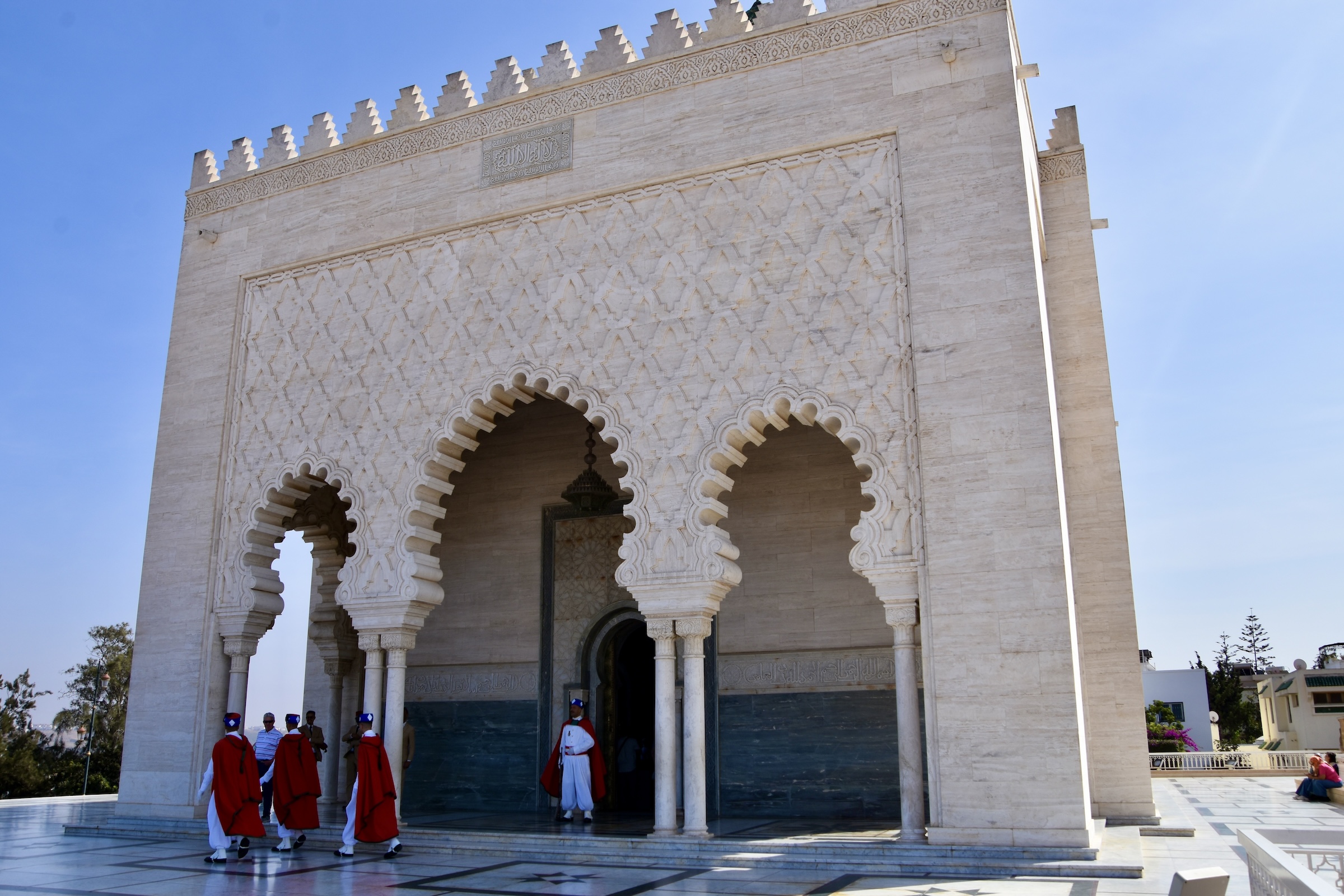
Inside, the tomb of Mohammed V dominates with a coffin more apt for Goliath than a normal human being. Contrast it to that of Hassan II and Prince Abdullah in the corners. For some reason there is a tendency to vastly increase the size of a leader in death; the figure of Ho Chi Minh in his Hanoi mausoleum is much larger than the original Ho. And don’t even ask about Napoleon’s in Les Invalides in Paris. Mohammed V was no more then 5’9″ and you could fit about four people that size into that coffin.

Opposite the mausoleum is the Hassan Tower, the minaret of the unfinished mosque started by Yaqub al-Mansur, the third caliph of the Berber Almohad dynasty in 1191. When he died in 1199 construction halted and today there are 348 columns marking the outlines of what would have been one of the largest mosques ever built, bigger than the massive Grand Mosque of Cordoba.
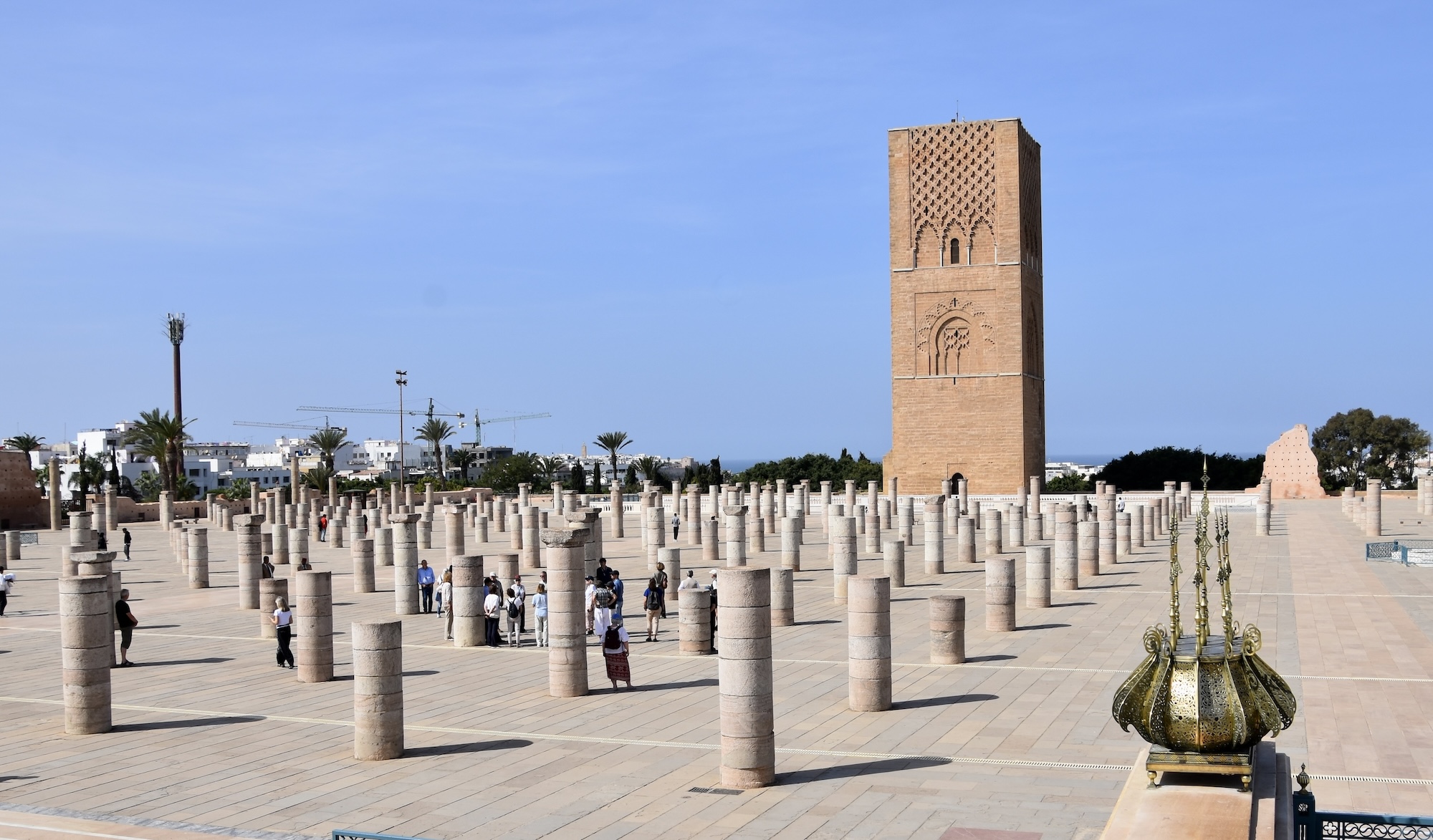
Walking among the columns you can clearly see that some of them have Roman pediments that were salvaged from the remains of Sala Colonia and possibly even the Roman city of Volubilis which we’ll visit tomorrow.
Both the tower and the remnants of the mosque are part of the Rabat World Heritage Site.
The mausoleum, Hassan Tower and unfinished mosque sit on a high bluff overlooking the Bou Regreg River some hundred feet or so below. Crossing the road to have a look down into the river valley reveals two truly amazing modern structures that are in complete contrast to ancient Rabat. Honestly, my initial reaction on seeing this was WTF? Let’s take a closer look.
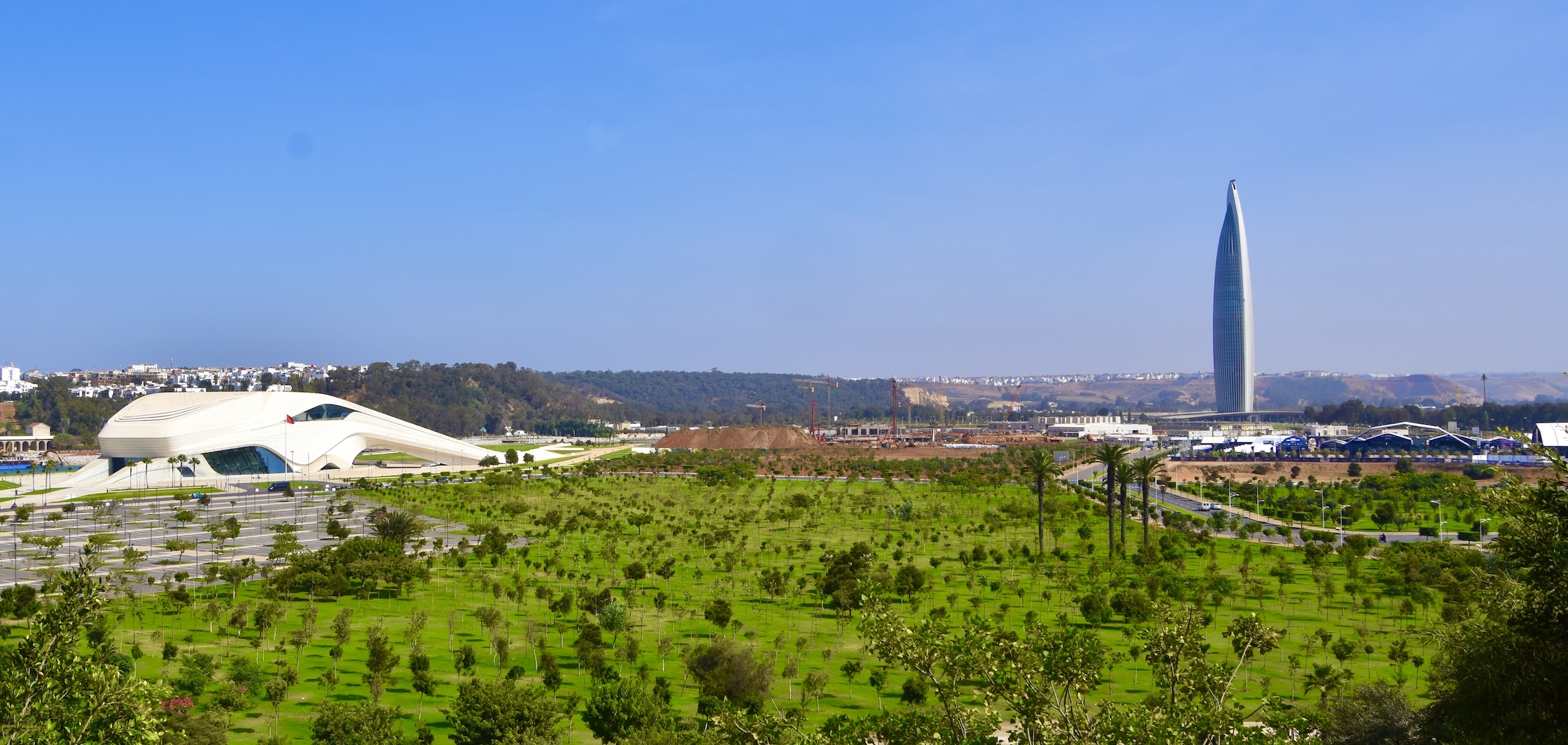
This is the Grand Theatre of Rabat which was one of the last structures designed by famed Iraqi-British architect Dame Zaha Hadid, informally known as ‘The Queen of Curves’ for her over the top use of anything but straight lines in her designs. Opened in only 2024, we would be among the first foreigners to set eyes upon what is rapidly becoming known as ‘The Cobra’ for reasons that are readily apparent once you look at it closely.
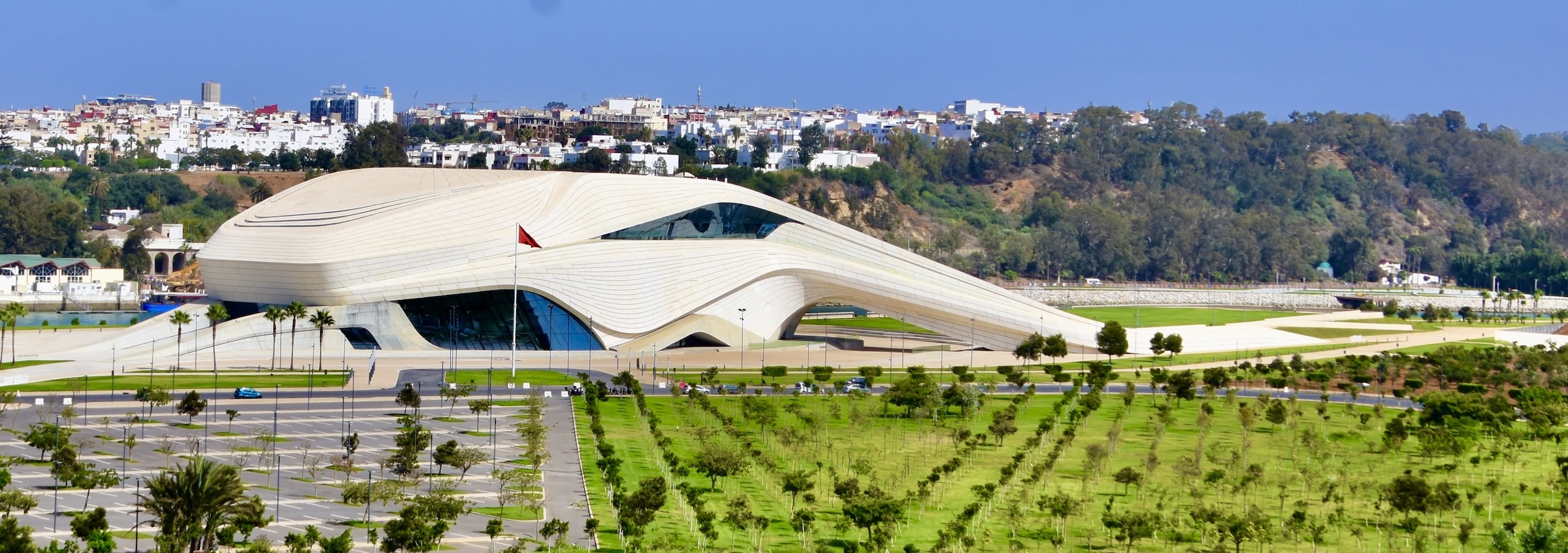
The other noteworthy building you see from this vantage point is the Mohammed VI Tower which at 250 metres (820 feet) is the third tallest building in Africa. It was built by the Belgian Besix group who were also responsible for the Burj Khalifa in Dubai, the tallest building ever built. Talk about a contrast between ancient and modern!
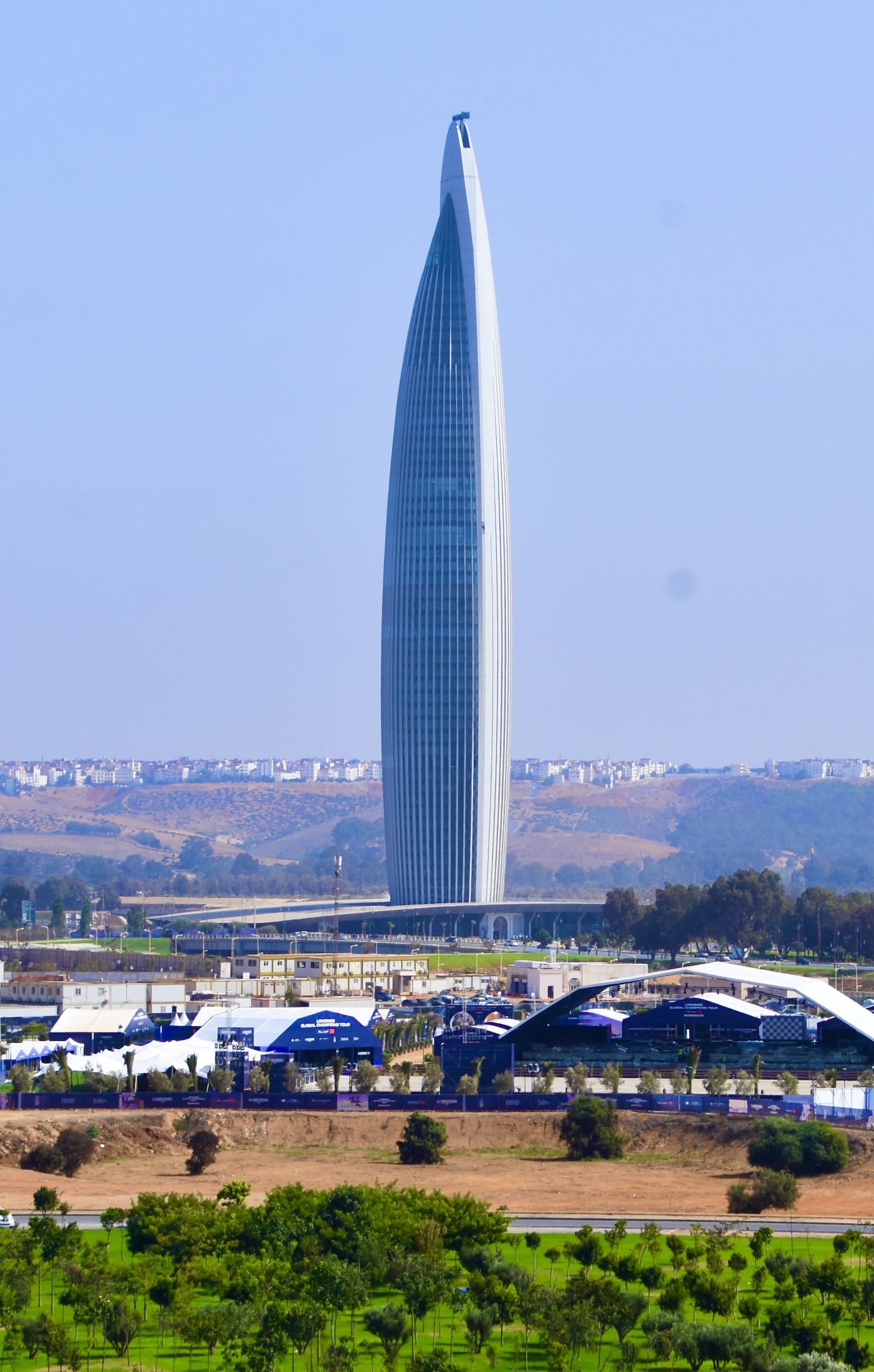
Kasbah of the Oudayas
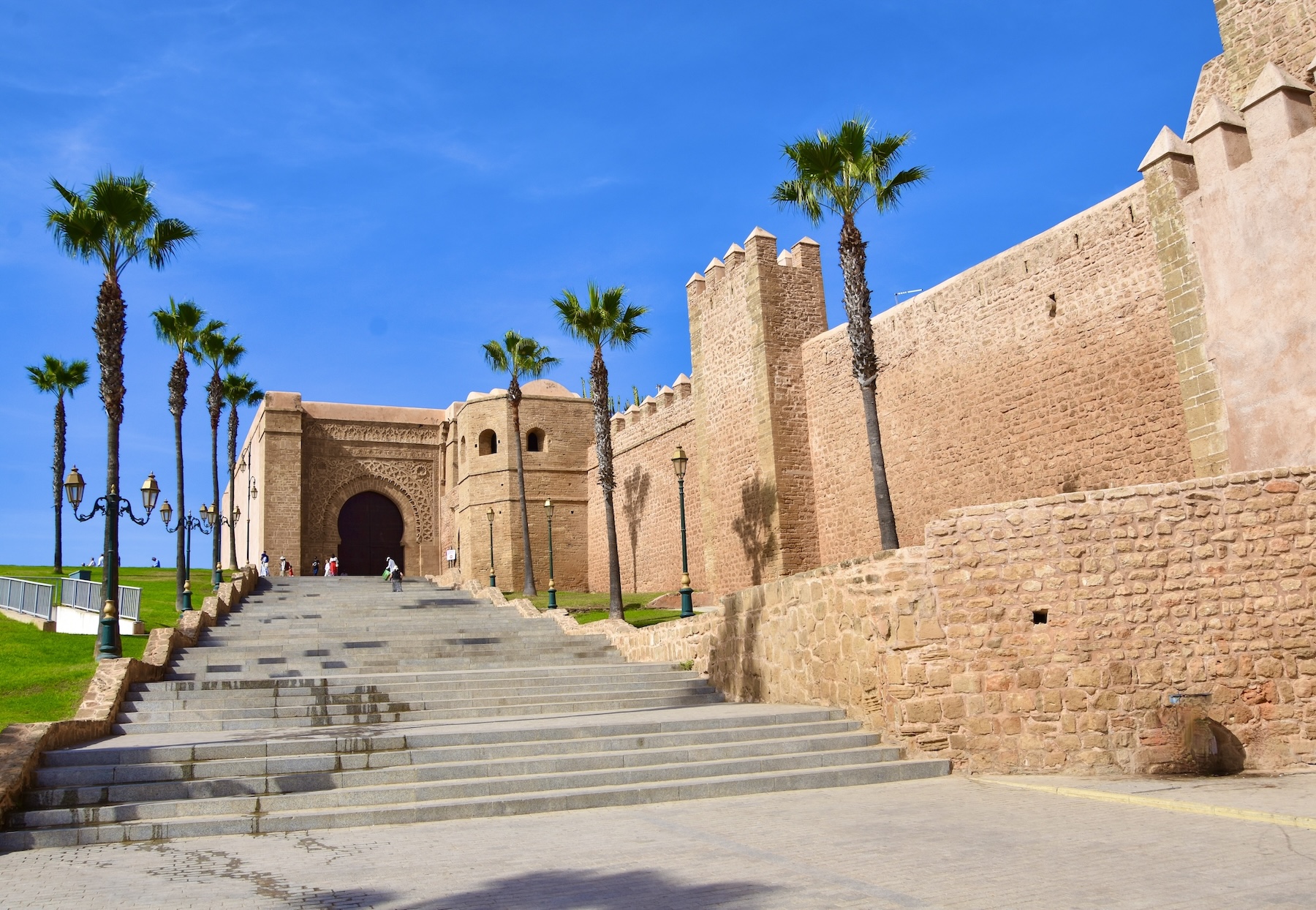
Okay, we are about to visit our first kasbah in Morocco. Is there any word that has a more romantic connotation when one thinks of the architecture and sense of mystery associated with North Africa? Although Charles Boyer never actually uttered the words “Take me to the kasbah” in the movie Algiers, it was used in the trailer and stuck ever since as an ultimate come-on to romance tinged with a hint of danger.
So what exactly is a kasbah? Commonly confused with a medina, it refers to a fortified location, often a citadel, that serves as the home base for a powerful family or clan. It’s not that much different than a medieval European castle and most kasbah’s origins date from the same period.
The Kasbah of the Ouyadas dates from the 12th century and was part of the vast Almohad Caliphate that controlled all of northern Morocco and Andalusia for just under 200 years before losing ground to the Christians in Spain and the Marinids in Morocco. The map below shows the Almohads at their height. Note that Rabat was not a recognized name at that time with Salé being the name of the settlement that dated back to Phoenician times.

Weirdly, the Ouyadas for whom the place is named, didn’t appear on the scene until the 17th century when Sultan Moulay Ismail settled a group of his military supporters in the kasbah as a counterweight to other tribes whose loyalty was suspect. Later in the 19th century the remaining Ouyadas were expelled from Fes and joined their brethren in Rabat.
What we are visiting today was largely restored by the French during their 20th century occupation and in 2012 it was included in the Rabat World Heritage Site.
The entrance to the kasbah is truly grand as shown in the photo above. Inside, unlike other kasbahs we visited later on the trip, this place was truly spacious and airy.
Now’s the time for a little quiz. What do you think you will take the most photographs of on this tour? The Moorish architecture? Nope. The food? Nope. The Moroccan scenery? Nope.
It will almost certainly be the cats. In Morocco they are everywhere and they have a habit of posing in the most photographable ways. There’s no better example than these cats sprawled across a set of steps just inside the kasbah.

The streets and alleys inside this kasbah are positively superhighways compared to most that were to come. I was very much reminded of Spain’s Pueblos Blancos which is not surprising since their origins are not that much different in time than this place, although I suspect it was the French renovations that gave it this look today. See if you agree.

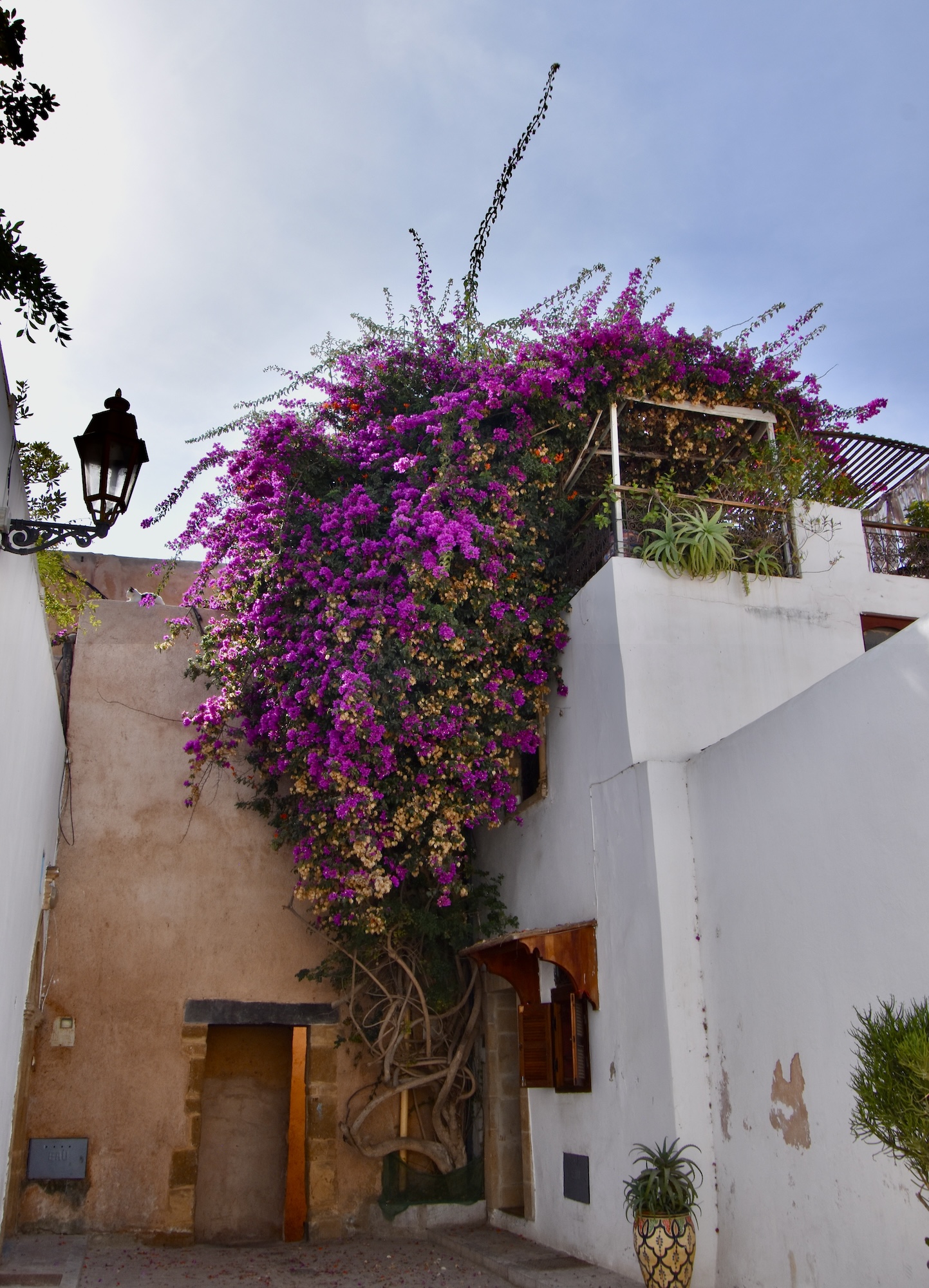
Spain or Morocco? I wouldn’t harp on this, but for the fact that no other place we visited in Morocco was quite like the Rabat Kasbah. Only in retrospect did I realize what a truly special place this is.
Here is the view of the river from the kasbah. If you look closely you can see two swimmers making their way upstream.
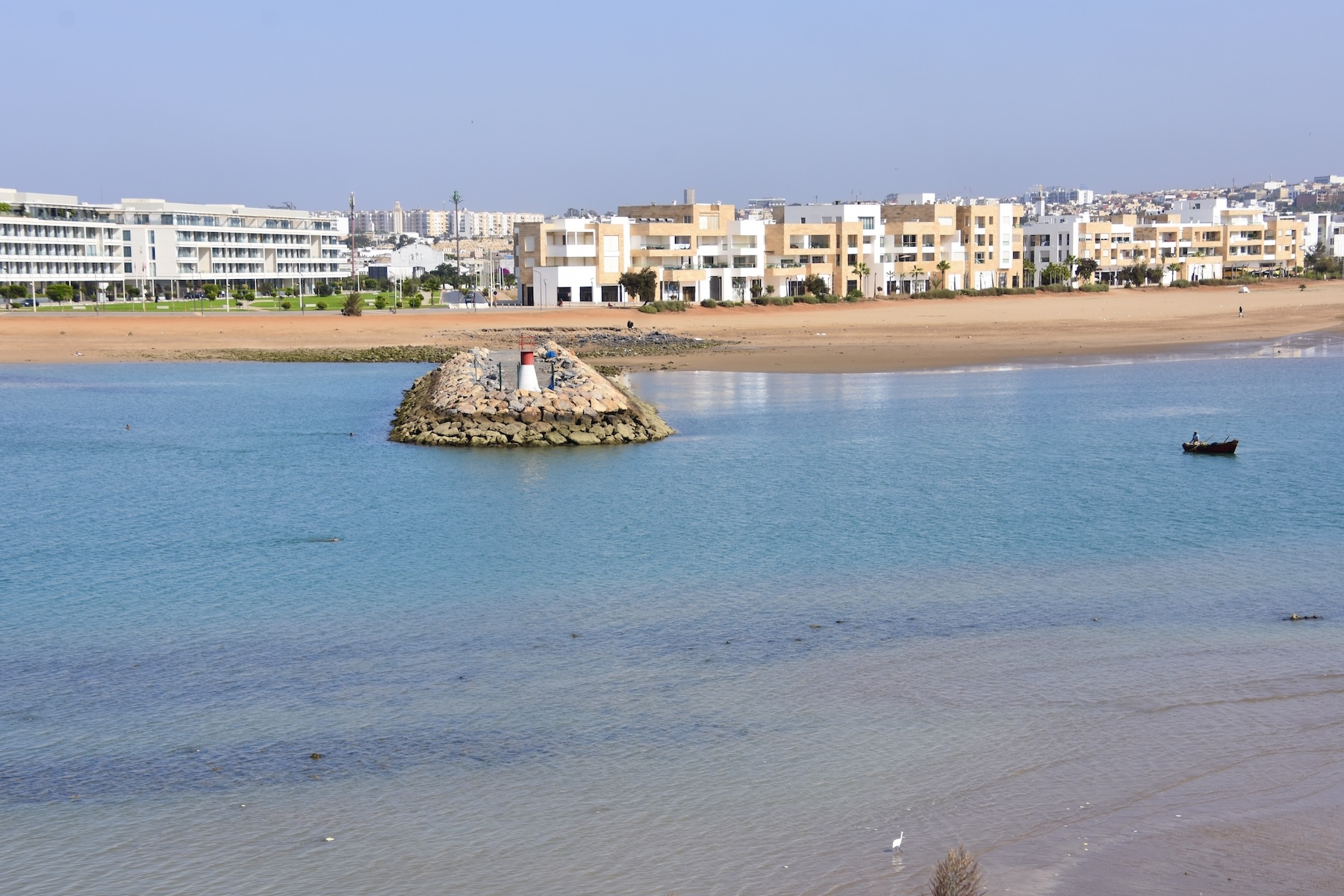
What I also did not appreciate at the time, was that Rabat is virtually tourist free. I naively assumed this is what the other places we would visit would be like. Silly me.
Anyway, Rabat was a very worthwhile visit and one that’s not on most tour companies itineraries which explains the relative lack of tourists,
In the next post we’ll visit the Roman city of Volubilis, one of the best preserved in Africa.

